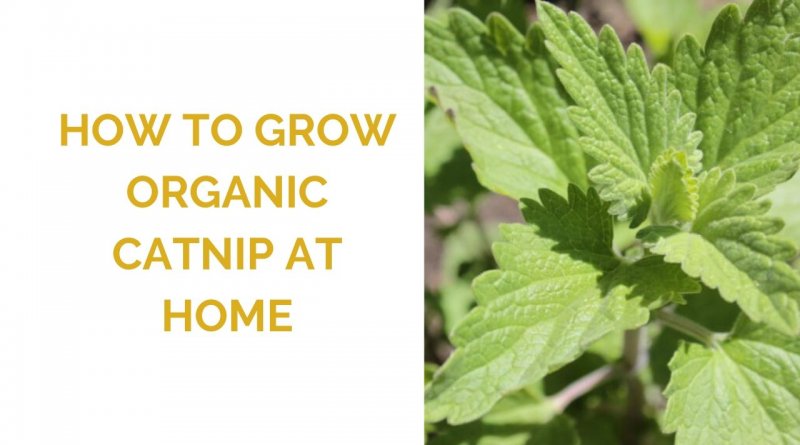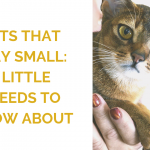How to Grow Organic Catnip at Home
Last Updated on
Catnip is well known for the euphoric effect that it can have on cats. You’ve probably bought dried catnip from the store to amuse your cat, but did you know that it’s easy to grow organic catnip at home?
Catnip is a hardy herb that can withstand dry spells and varied temperatures. Catnip can grow in full sun or partial shade. Growing it at home adds beauty to your yard and provides a constant source of fun for your cat.
Let’s learn more about why growing your own catnip is a great option and how you can get started growing catnip at home.
Quick Navigation
Disclaimer: Some of the products recommended in this post have affiliate links. If you make a purchase through these links, we’ll receive a small commission, but it won’t cost you any extra. Thank you!
Why grow organic catnip at home?
Catnip is a great ground cover plant, perfect for planting at the base of other plants or flowers – ones that are safe for your cat, of course. If your cat goes outside, it’ll make your yard a more inviting space for them. Catnip is a perennial plant, meaning that it will continue to grow year after year.
You’ll know exactly how your catnip was grown.
Do you worry a lot about where your cat’s food came from? If sourcing is important to you, then growing your own catnip is an obvious choice. A lot of commercially available catnip is grown organically, meaning it was grown without chemical pesticides or fertilizers. Sometimes that isn’t enough—you’d rather know exactly how your catnip was grown from seed to plant. If you grow your own catnip, you’ll know exactly how it was grown and won’t have to worry.
Growing catnip is more cost-effective than buying it.
If you ever feel like your pockets are being drained to fund your cat’s ‘nip addiction, think about growing your own catnip. Catnip plants grow quickly and you’ll soon have enough catnip to dry out and refresh all of your cat’s favorite toys. Instead of spending money on organic catnip from the store, you can have a plentiful supply growing in your yard—and it’s essentially free.
How to grow catnip.
You can grow catnip from seed or transplant a baby plant. Both catnip seeds and plants are available at a local home and garden center, online, or even at a pet store.
If you have any catnip-growing friends, ask if you can snag some seeds or seedlings from them! Catnip buds contain a lot of extra seeds, so most catnip gardeners have extra. We love the catnip-growing community and have started a great catnip garden from the generosity of another gardener.
Choose a location for your catnip plant.
Catnip can be grown in just about any soil but it tends to do best in well-draining, loamy soil. In sandy soil or when grown hydroponically, the aroma tends to be stronger.
Catnip does best in full sun, but can also grow in partial shade.
If your cat is going to have free access to the catnip plant, make sure that it isn’t planted in your garden next to another plant that you don’t want to be destroyed. Cats can get pretty aggressive with catnip plants—rolling, biting, etc.—and this could spell disaster for nearby plants.
Catnip can be grown directly in the ground or in a well-draining pot.
Growing catnip from seed.
Catnip seeds should be sown during the spring after any threat of frost has passed. Consult a hardiness zone map to figure out when it’s safe to plant in your area. If you have a short growing season, catnip can also be started indoors 4-8 weeks before the last frost and transferred outside after the soil is warm enough.
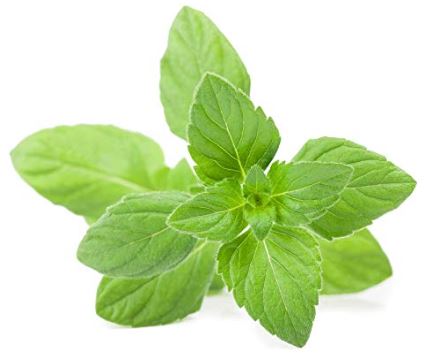
Catnip seeds are tough and should be stratified, or slightly damaged, before planting to ensure the seeds sprout. An easy way to do this is by freezing the seeds overnight and then soaking them for 24 hours.
Once you’ve chosen a place to grow your catnip and stratified the seeds, sow the little seeds in rows and cover them lightly with approximately 1/4 inch of soil. Keep the seeds moist and the soil temperature at around 70 degrees.
When the plants are five inches tall, thin them out so that they’re all about 12-18 inches apart. If you’re growing the catnip indoors in small cells, transfer them into 3-4 inch pots at this time so that they have enough room to develop a strong root system before transplanting into a large pot or into the garden.
If you started the catnip seeds indoors, it’s important to harden off the plants before transplanting them outdoors. To harden your catnip plants, take the seedlings outside in their pots and let them grow in a sheltered place outside for about a week. Make sure you take the seedlings inside or cover them at night if there is any chance of frost.
Soon, you’ll have happy little catnip plants that look like this:
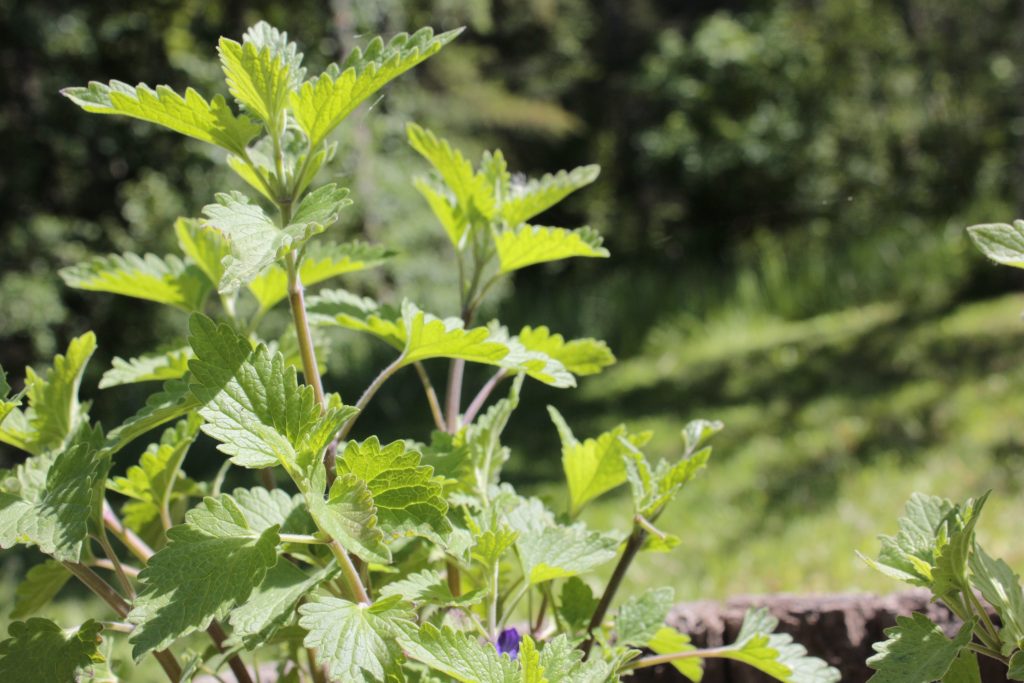
How to transplant a catnip plant.
If you have an established plant from a friend or started a catnip plant indoors, eventually you’ll have to transplant the catnip into a large pot or into the ground. It’s important to take care to ensure a successful transplant.
Water the catnip plant thoroughly a day before transplanting, then turn over the soil in the catnip’s new home. Turn up the soil about eight inches deep and three to four inches around the width of the plant. Dig a hole the size of the catnip’s root ball in the desired planting location, then gently place the catnip plant into the hole. Backfill and tamp down the soil around the plant’s rootball. Water the transplanted catnip well, and continue to keep the soil slightly moist until you observe new growth.
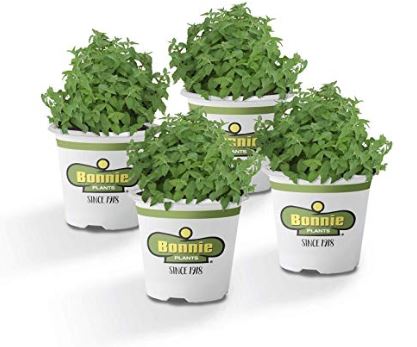
Maintaining your catnip plant.
Once your catnip is established, water it whenever the soil is almost dry. Give it a complete soaking each time you do so.
Pick off deadhead flowers to encourage continued growth. It’s a good idea to remove flowers to prevent the buds from going to seed, too. If not controlled, catnip can quickly spread and begin to take over the garden.
Transplanting your catnip and sharing with friends is another great way to keep your catnip fresh and strong. Each year, trim spent stems to make room for the new growth in the spring. Catnip doesn’t have much of a problem with pests and disease. Your cat may be one of the greatest dangers to your catnip plants! Cats can damage plants by rolling around in the catnip patch or chewing the plant. Catnip is hardy and can take a little abuse, but try to give the plant some time to recover if you notice it becoming damaged.
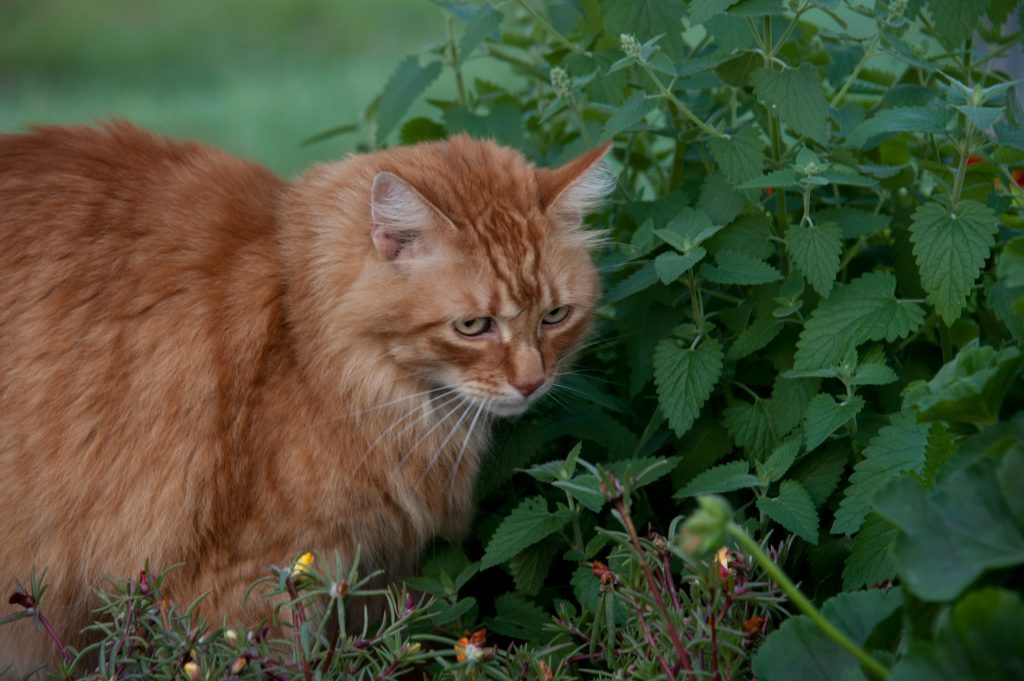
How to use your organic catnip.
You can either allow your cat to roll in and nibble at your catnip as it grows in the garden or harvest and dry the leaves. When dried, the catnip is more concentrated, will last for a long time, and you can use the dried catnip to fill toys and sprinkle on new kitty furniture.
To dry the catnip, just clip the catnip just above a stem joint and allow the leaves to dry on a paper towel for several days. Placing the catnip on a windowsill in the sun (where your cat can’t disturb it) will help it to dry fast. Once it’s dry, you can collect the catnip in an airtight container and store it.
Catnip isn’t just for cats, though! Catnip can also be used to make an almost minty tea. Use 1-2 teaspoons of dried catnip leaves and buds for one cup of tea. If you’re using fresh leaves, double the amount. Catnip tea is often used as a calming aid in relieving stress and anxiety.
Did you find this post useful? Pin it for later!



